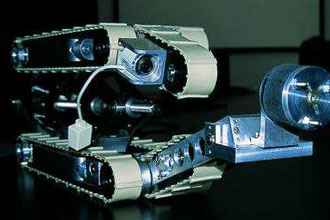When you back home at night, have you ever thought about adding a light that will automatically turn on the illumination when you turn it on at night? The warm light reflects the green grass on the window sill, which saves the trouble of finding a switch in the night and adds a touch of atmosphere to the home.

- After the sun goes down, the solar lights glow warmly
Preparation and materials
This production still has some difficulty, you need to have the skills:
Some middle school physics, electrical knowledge, can understand the parallel and parallel conversion and resistance, voltage, current conversion, understand the characteristics of basic semiconductor components such as triode
Touching the soldering iron, using solder wire for some simple drag welding and line connection
With electric iron, tweezers, needle-nosed pliers, hot melt glue gun and other tools
Go to the shopping site to purchase components
Below are the materials needed, and a large number of ready-to-buy modules are available to reduce the difficulty, and some materials (such as batteries, vases) can be used for waste.

- real shot of the material

- Material purchase list (excluding tools and adhesives, wires, strings, solder wire, etc.)
Start making
Before you start, make sure you have enough tools, such as scissors, electric iron, needle-nosed pliers, hot melt glue gun, etc. If not, this set of tools is not expensive to buy, and can be used multiple times.

- It is more difficult to solder the patch LED on the hole plate
1. Use the soldering iron to firmly solder the LED on the first hole plate (parallel). This process is more complicated. If you are in trouble, you can find some ready-made lights on the shopping website, or even find a constant current. Drive the LED board, in this case only use three off-the-shelf modules (charging, light-sensitive, LED) to complete the entire production.

-Using DuPont line for hot plug connection
2. Prepare several DuPont wires (also directly soldered) to connect the photosensitive module to the second hole plate. You need to connect the power supply pole and the digital signal output.

- soldering the photosensitive module
2. After the photosensitive module is soldered to the hole plate, due to insufficient module output capability, an additional triode is required for current expansion (using the S8050). Here you need the base (B) and collector of the triode. ), the emitter (E) is known, if it can not work properly, you can add a 10K pull-up resistor (connect the B pole to the power supply + with a resistor).

- Wiring method as shown

- drilling holes by hand
3. At this point we found that the photosensitive module could not be directly fixed on the hole plate, so use a hand drill to open the hole and fix it with screws.

- fixed with screws

-Fixed protection two-in-one board with foam tape + pin header
4. When fixing the charging + protecting the two-in-one board, it is found that there is no screw hole, and it is difficult to use the method of using foam tape + welding pin. It is also difficult to use the flying wire directly. Stick with glue

- After doing this, the front is still very simple.
5. As shown in the figure, put all the components in place, and try to hide things like flying lines on the back of the board (copper foil surface) so that the front side is as simple as possible.

- Rear routing and line placement

-The copper column can be easily installed and removed, and looks beautiful
6. Next, start to process the LED board. First use the copper pillar to make a space higher than the battery, so that the battery can be fixed in the middle.

- Fix the battery in the center with foam tape

-Up and down two holes and plates together
7. Finally, the upper and lower parts are combined, and the main body is almost finished. It can be turned on for testing. Remember to adjust the sensitivity of the photosensitive module to fit at this time. You can use the table lamp for testing in the room where the curtain is pulled.

- The battery is perfectly hidden in the center

- Milky white acrylic sheet softens light
8. Next, take a 3mm acrylic sheet of the same size as 5x7cm. It is best to choose a creamy acrylic sheet. You can also use an A4 paper or a matte plastic film, but it is not strong and beautiful.

- Secure the acrylic sheet with hot melt adhesive
At this point, the switch is turned on and the light is placed in the dark. He should have been able to emit warm and soft light. So far 80% of the process has been completed, leaving only the solar cells and the vase as a muffle cover.

- When the ambient light dims, the light will automatically light up

-The solar cell can also charge the phone
The handling of solar cells is very simple. Find an unused Mirco USB cable (old Android phone cable) and cut off the larger USB-A port, leaving only the Mirco port, and then soldering the positive and negative poles to the solar cell. It can be used. Since the solar cell used is 6V, he can also be removed to charge the mobile phone, charging treasure and other equipment. Of course, the power is relatively small, only about 0.6W (you can also choose a solar cell with higher power, but Remember to choose between 5.0 and 6.0V voltage)

- Use hot melt adhesive to fix the wire to prevent the solder joint from falling off

- Vases are recommended to choose a small color, and you can also use creative light-transparent items such as lanterns, but you can plug the host
Three big pieces are ready, then we will start the final assembly. In order to fix the main part to the upper part of the vase, take four thick single-core wires with a plastic case and fix them to the main unit with hot melt glue. corner.

- Wires with a plastic case are more easily adhered by hot melt adhesive than copper wire
Put the main unit into the vase and bend the four copper wires to make it float, pay attention to keep it level.

- This makes it easy to remove and repair when it is in trouble.
Use a hot melt adhesive to bond the solar cell to the copper wire, then take a hemp rope (or a plastic rope) and wrap it around the bottle for two turns and pull a line from both ends so that the solar light can hang on the object. .

- Hemp rope or paper rope is very beautiful, but pay attention to long-term sun exposure will make it easy to break
At this point the work has been completed, to appreciate

-The solar cell is the opposite of the color of the vase, but it looks very good.

- Crystal clear glass brings a good look and feel

- The red-purple vase echoes the plants outside the window, and only silently supplements itself during the day.

- Going closer, still beautiful

- Later, due to fear of a broken rope, I used a shoelace to tie it to the security window.

- The twilight came, ending the day's power replenishment, the small lights began to shine, and the warm color of 4500K was very warm with the red vase.

- The twilight is completely coming, but the window is still bright
The whole manual is over. The solar light is measured in the case of 8 hours of sunshine during the day (part of the time is blocked by the sun). The light is still bright after a whole night. The actual brightness is close to that of the mobile phone, but the light area is large. It is glaring and the light is warm, giving a nice atmosphere to the dark balcony.
Someone may ask at this time: Why not buy directly? Why bother to do it yourself?
The value of craftsmanship and DIY is reflected in the inner heart of this process. If you buy it, it will be gone after a few days of fresh energy, but you will do it yourself. It will always be accompanied by a sense of accomplishment. You can create and use your imagination as you wish, and finally let some empty ideas and frameworks become In reality, interest is generated in this way.
Just like this solar light, as long as you have creativity and technology, you can change the outer vase into a lantern, engraved acrylic sheet, shiny pumpkin head or doll and other interesting things. Finally, from the creative span to the product, as long as you want to do it, dare to do, nothing is impossible. Keep yourself passionate about life and creation.
Follow Me
twitter:https://twitter.com/TencoTechnology
facebook:https://www.facebook.com/tencotechnology
linkedin:https://www.linkedin.com/in/nicole-song-64400b147/

 انگلیسی
انگلیسی  چینی
چینی  آلمانی
آلمانی  کره ای
کره ای  ژاپنی
ژاپنی  فارسی
فارسی  Portuguese
Portuguese  Russian
Russian  اسپانیایی
اسپانیایی 





